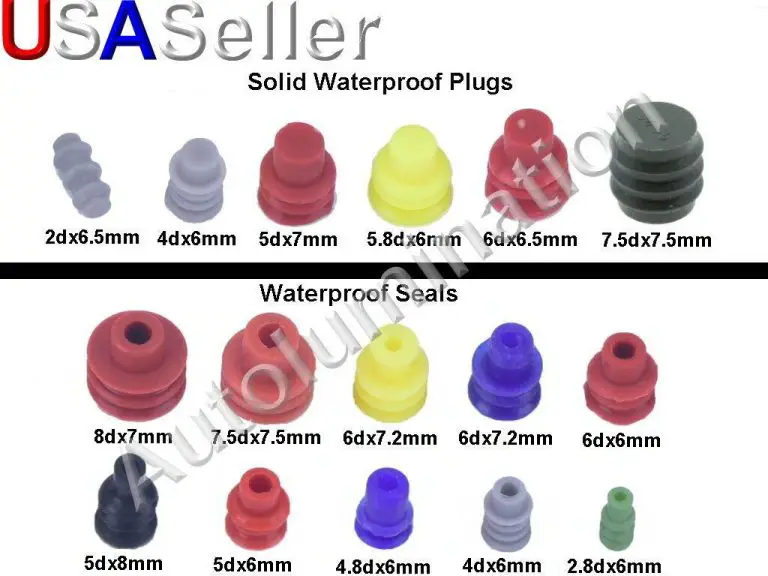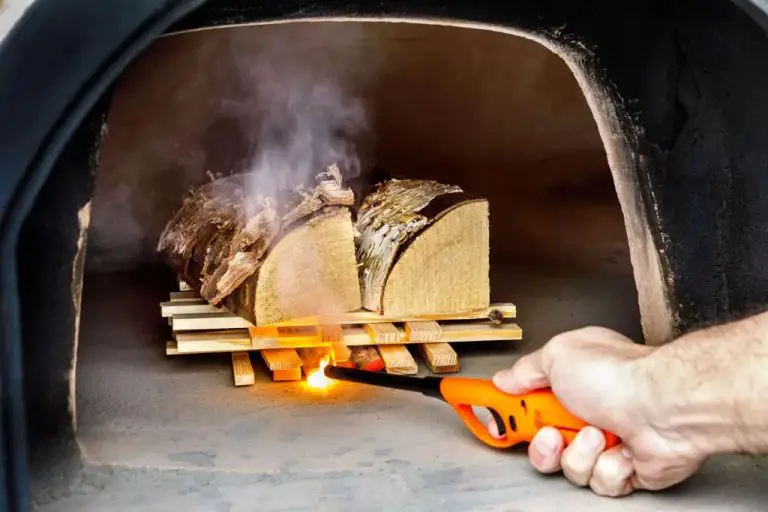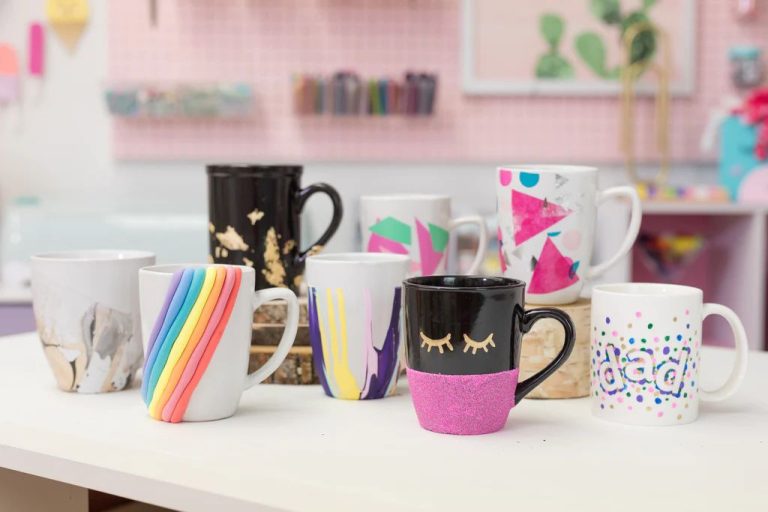Can You Soften Hard Air Dry Clay?
What is Air Dry Clay?
Air dry clay, also known as modelling clay, is a non-hardening modeling material made of a mixture of water, clay, and cellulose-based binders. Unlike typical pottery clay that requires firing in a kiln, air dry clay hardens naturally by evaporating its moisture over time when exposed to air. It is a popular, lightweight clay for beginners and hobbyists, especially children.
There are some key differences compared to other clays like polymer clay:
- Air dry clay is water-based while polymer clay is oil-based and requires baking to harden.
- Air dry clay will eventually dry out and harden at room temperature whereas polymer clay remains malleable.
- Air dry clay is messier to work with and less durable once dry compared to polymer clay.
Some pros of working with air dry clay include:
- Easy to use straight out of the package, no baking or firing required.
- Low cost and readily available at craft stores.
- Lightweight, making it great for kids’ projects.
- Air dries naturally without additional equipment.
Some cons include:
- Messier and less smooth texture than polymer clay.
- Projects can break or crumble easily once dry.
- Colors may fade over time with exposure to light.
- Possible cracking during drying if clay is too thick.
Can Air Dry Clay be Softened?
Air dry clay is designed to harden as it dries out through evaporation. The water content in the clay diminishes over time, allowing the clay particles to bind together into a hardened state.
Luckily, it is possible to re-soften hardened air dry clay if needed. The key is to reintroduce water back into the clay to loosen the bonds between the clay particles. There are several techniques that can be used to soften hardened air dry clay:
- Soaking the clay in water
- Using commercial clay softening products
- Heating or baking the clay
- Kneading the clay by hand
Each of these techniques aims to add moisture back into the clay, relaxing the rigid structure and returning it to a malleable, workable state. With a little effort, crafters can successfully soften clay that has become too firm or brittle, extending the life of their air dry clay projects.
Why Soften Air Dry Clay?
There are several reasons why you may want to soften hardened air dry clay:
- Clay that has been sitting out and dried becomes difficult to shape and mold. Softening it makes it pliable again for sculpting.
- Old clay often gets brittle and cracks. Softening can restore it to a smooth, flexible state.
- Soft clay is much easier to blend and mix colors than hardened clay. Softening enables marbleizing and color mixing.
- Smooth surfaces and fine details are only possible with soft, malleable clay. Hard clay will crack when sculpting intricate shapes.
- You can attach softened clay pieces together seamlessly. Hard clay tends to separate at joints.
The main benefit of softening clay is that it becomes workable again for any project. You can sculpt new creations or reuse leftover bits of hardened clay. Softening brings dried clay back to life.
The downside of working with hardened clay is that it limits what you can make. Fragile clay is prone to cracking and breaking during sculpting. The end result is often rough or crumbling. Soft clay delivers a much smoother finish and flexibility.
Softening Techniques
There are a few main techniques for softening air dry clay, including soaking in water, using commercial softening products, heating the clay, and kneading by hand.
Soaking in Water
One of the easiest and most effective ways to soften air dry clay is to soak it in water. Simply submerge the clay in room temperature water for 15-30 minutes. This allows the water to penetrate the clay and make it more malleable. Make sure to knead the clay after soaking to distribute the moisture evenly. Soaking in water will soften the clay temporarily, but it will harden again once the water evaporates.
Commercial Softening Products
There are products like clay softeners and extenders available for softening air dry clays. These commercial products are specifically designed to make clay more flexible and workable. Simply mix a small amount of the softener into the clay as directed on the packaging. The clay softeners contain ingredients that prevent the clay from drying out too quickly.
Heating the Clay
Heating air dry clay for a short time can make it more pliable and soft. Place the clay on a microwave-safe plate or baking sheet and microwave for 10-20 seconds at a time. After heating, knead the clay well. You can also warm clay in the oven at 200°F for 1-2 minutes. Be very careful not to overheat the clay, which can burn it.
Kneading by Hand
Simply kneading stiff clay vigorously with your hands can warm it up and make it more malleable. Knead the clay on a smooth, clean surface while applying pressure. This motion softens the clay by warming it up from friction. Continue kneading until the clay becomes uniformly soft and pliable.
Soaking in Water
One of the easiest ways to soften air dry clay is by soaking it in room temperature water. Here are some tips for effectively softening clay using this method:
Start by submerging the hardened clay completely in a bowl or container filled with room temperature water. Make sure the water covers all surfaces of the clay. Let the clay soak for at least 15-30 minutes, allowing time for the water to fully saturate the material. For quicker results, you can soak the clay for 1-2 hours.
As the clay absorbs the water, it will slowly become softer and more malleable. Knead the wet clay with your hands to help distribute the moisture evenly. If any areas still feel dry or stiff, continue soaking the clay until it reaches the desired consistency.
The main benefits of soaking clay in water is that it’s simple, requires no other materials, and is very effective at softening air dry clays. Just water and some time is all you need. The downside is that excess water can alter the clay’s properties once fully dried again. Be sure to knead out excess moisture before using the clay in projects.
Commercial Softening Products
There are several commercial products available designed specifically for softening air dry clays. These products work by adding moisture and plasticizers back into hardened clay.
Types of Clay Softeners
Some common brands of clay softeners include Sculpey Clay Softener, Kato Polyclay Softener, FIMO Clay Softener, and Cernit Clay Softener. These all come in liquid form in small bottles. There are also spray versions like Crafty Arts Mister Softener Spray.
How Clay Softeners Work
Commercial softeners contain ingredients like water, glycerin, and silicone oil. When applied to hardened clay, these ingredients are absorbed into the clay and act as plasticizers to make it pliable again. The water rehydrates the clay while the glycerin and oil help restore its flexibility.
Instructions for Use
To use a liquid clay softener, simply apply a few drops directly onto hardened clay. Knead it into the clay, adding more softener as needed until it becomes workable again. For a spray, mist the clay lightly and knead until soft. Follow package directions for exact usage instructions.
Tips for Best Results
Work in small sections at a time when softening clay. Allow the softener to fully absorb before adding more. Too much at once can make the clay sticky. Thoroughly knead to evenly distribute softener. Let clay rest for 10-15 minutes after softening for best results.
Pros and Cons
Pros: Commercial softeners quickly and easily soften hardened clay without needing heat. They soften effectively while retaining clay strength and elasticity. Easy to control amount used.
Cons: Can cause stickiness if overused. Limited shelf life after opening. More expensive than other softening methods.
Heating the Clay
One simple way to soften air dry clay is by heating it up in the microwave or oven. When heated, the water molecules in the clay start moving faster, causing the clay to become softer and more pliable.
To heat clay in the microwave:
- Form the clay into a ball or slab no more than 1/2 inch thick so it heats evenly.
- Microwave the clay in short bursts of 10 seconds at 50% power, rotating it between bursts.
- Check the clay frequently as microwaves heat unevenly. Stop heating as soon as it feels soft and pliable to avoid overheating.
To heat clay in the oven:
- Preheat oven to 200°F.
- Form the clay into a ball or slab no more than 1/2 inch thick and place on an oven-safe dish.
- Heat for 10-15 minutes, checking frequently to prevent overheating.
Heating clay makes it temporarily more pliable, but can increase brittleness when it fully dries. Only heat clay right before use, and avoid overheating as it can burn the clay.
Kneading by Hand
One simple technique to soften air dried clay is to knead it manually by hand. This can help flex and loosen the stiff clay with the warmth and moisture from your hands. Begin by working and kneading the clay in your palms. Start gently and continue working it for 5-10 minutes, progressively kneading harder as you go. For very hard clay, it may take 15-30 minutes of continuous kneading to make a noticeable difference in softness.
The advantage of kneading by hand is that it doesn’t require any special tools or equipment. It’s a convenient, accessible method. However, it can be time-consuming and tiring on the hands for larger pieces or very hardened clay. Your body heat and skin oils may also slightly alter the clay color. Overall, kneading by hand works best for small pieces of recently hardened clay. For large or very stiff pieces, other softening methods may be more effective.
Storing Softened Clay
Once you’ve taken the time to soften your air dry clay, you’ll want to make sure it stays soft so you can use it for your projects. Here are some tips for proper storage:
Store the clay in an airtight plastic bag or container. This prevents the clay from drying out again. Seal the bag/container thoroughly by pressing out excess air before sealing.
You can also wrap the clay tightly in plastic wrap if you don’t have a bag or container. Wrap it up into a ball or log shape with no air pockets.
Keep the clay somewhere cool. Warm conditions can cause the clay to dry out faster. Store it at room temperature or in the refrigerator.
Consider freezing the clay for long term storage. Simply wrap well and freeze for up to 6 months. Defrost overnight in the fridge before using again.
If storing clay in the fridge or freezer, put it in an airtight bag first. This prevents it from picking up odors from other foods.
Check on the clay every so often. If it starts to dry out, knead in a few drops of water to restore softness.
With proper storage methods, you can keep air dry clay soft for weeks or months before using it in your crafts and projects.
FAQs
Here are answers to some frequently asked questions about softening air dry clay:
Why does my clay get hard and difficult to shape?
Air dry clay will naturally harden over time as it dries out. To keep it malleable for sculpting, it needs to be kept moist and soft. Hardening can also occur if the clay is exposed to direct sunlight or heat for too long.
What’s the best way to soften hard clay?
The most effective method is to soak the clay in room temperature water for at least 24 hours. This allows the water to fully penetrate and rehydrate the clay. Kneading the clay with your hands after soaking will also help work the moisture back in.
Can I use oil or baby oil to soften clay?
Oils are not recommended for softening clay. They will coat the outer layer of the clay but won’t allow moisture to get back inside. Over time, oil can actually draw more moisture out of the clay and cause it to dry out faster.
How do I keep my clay soft for longer periods?
Store unused clay in an airtight container or plastic bag to prevent it from drying out. You can also mist the clay with water and wrap it tightly in plastic wrap after each use. Only take out the amount of clay you plan to immediately use.
Why isn’t my clay softening after soaking it?
If soaking alone doesn’t rehydrate the clay, try kneading it firmly with your hands to work the moisture back in. Let it soak for a longer period. Ensure the water can freely access all surfaces of the clay. If it still won’t soften, the clay may be too far gone and need to be replaced.
Can I soften clay in the microwave?
Microwaving is not recommended as it can create hot spots that burn or cook the clay. The uneven heating can also cause cracks. It’s safer to use the soaking method.
Is there a product I can buy to soften clay?
There are commercial clay softeners and conditioners available. These typically contain humectants that help retain moisture in the clay. Follow the product directions carefully as using too much can make the clay sticky.




